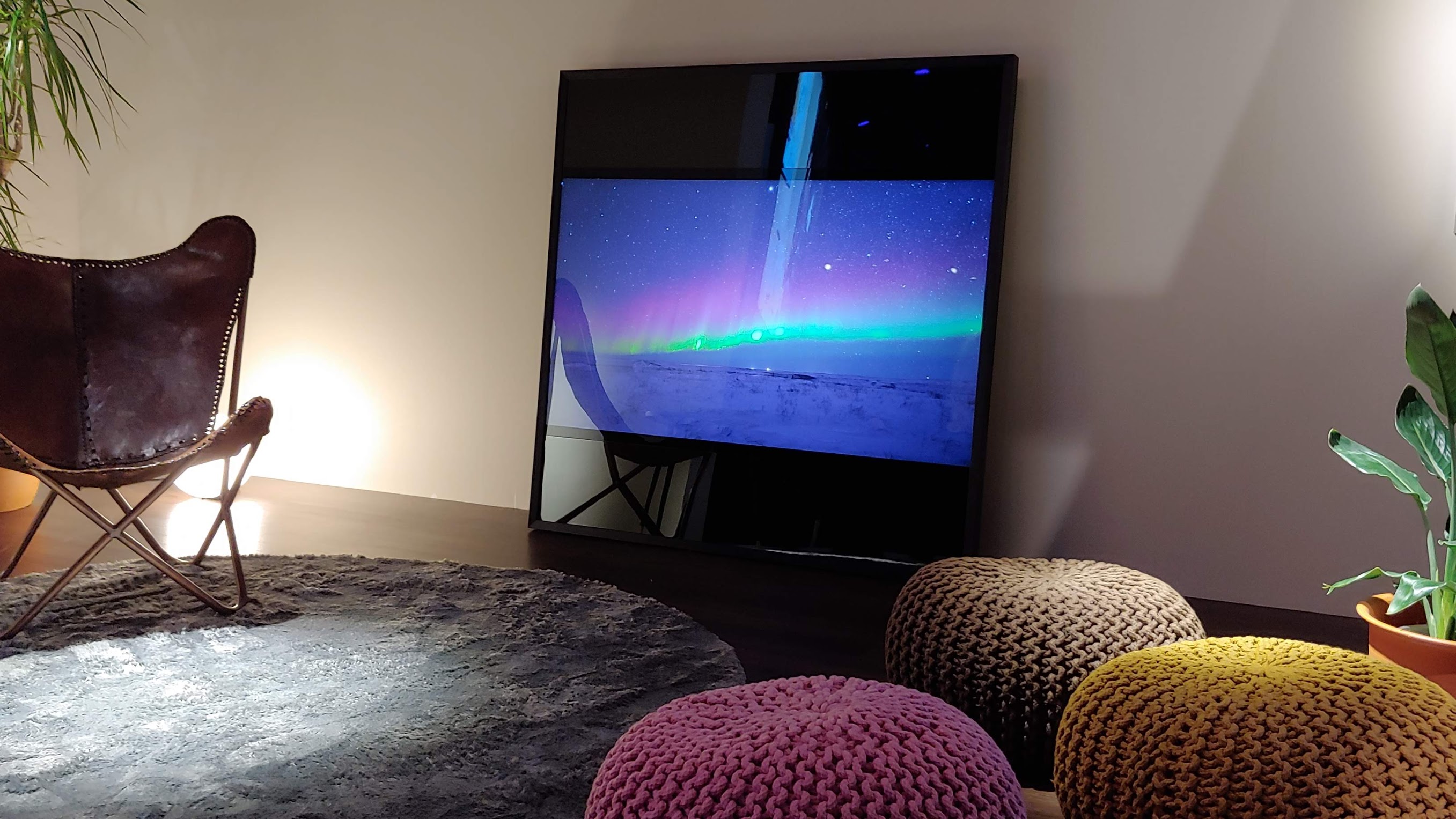Panasonic AMP display is part TV, part picture frame
‘Ambient Media Player’ concept looks to take on Samsung’s Frame

The idea of having a TV act as more than just a movie-viewing slab in your room has taken off in recent years, with Samsung’s Frame TV positioning itself as much as an interior design piece as a display, presenting works of art when it would otherwise be in standby mode.
At the Panasonic Innovation Forum, celebrating the company’s 100th anniversary, it showed its own intentions to spruce up your living room with a new type of display, the Panasonic AMP.
As much a picture frame as it is a TV, the AMP can be free-standing, balanced against a wall, or hung, displaying both static works of art and video art. In fact, the Panasonic engineers on hand to explain the purpose of the screen spoke of how it wasn't really intended as a product to view shows or movies on – and that’s in part due to its unusual size.

Picture perfect
The work of a new internal incubator project for fast-tracking design concepts at Panasonic, the AMP is unique in its screen ratio, being a near-perfect square, rather than the 16:9 widescreen displays we're more familiar with.
A 4K-equivalent LCD panel, its size allows for varied types of art to be displayed, as well as giving it just as varied options for placement in your home.
As an incubator project, there’s no street date for the AMP yet – it’s more an opportunity for Panasonic to gauge interest in the idea. And there’s room for some seemingly obvious features to be included – although the screen includes speakers designed to disperse audio in a wide stage to envelope a room in relaxing ambient sounds, there’s no way to upload your own pictures or videos. All content is piped in over the internet from Panasonic’s archives – which seems a missed opportunity for a piece that would work wonderfully as a large-scale digital picture frame.
But it's an interesting idea that would be well worth exploring for the company – while that early rush for digital photo frames was let down by cheap, low-quality screen technology (and equally primitive smartphone camera tech), it’s now possible to make slimline 4K panels of excellent quality with relative ease. And, with smartphones offering near-pro-level cameras in our pockets, there’s no end of personal, high-quality imagery with which to populate them.
Sign up for breaking news, reviews, opinion, top tech deals, and more.
- Samsung Frame TV review: here's what Panasonic's concept is up against

Gerald is Editor-in-Chief of Shortlist.com. Previously he was the Executive Editor for TechRadar, taking care of the site's home cinema, gaming, smart home, entertainment and audio output. He loves gaming, but don't expect him to play with you unless your console is hooked up to a 4K HDR screen and a 7.1 surround system. Before TechRadar, Gerald was Editor of Gizmodo UK. He was also the EIC of iMore.com, and is the author of 'Get Technology: Upgrade Your Future', published by Aurum Press.